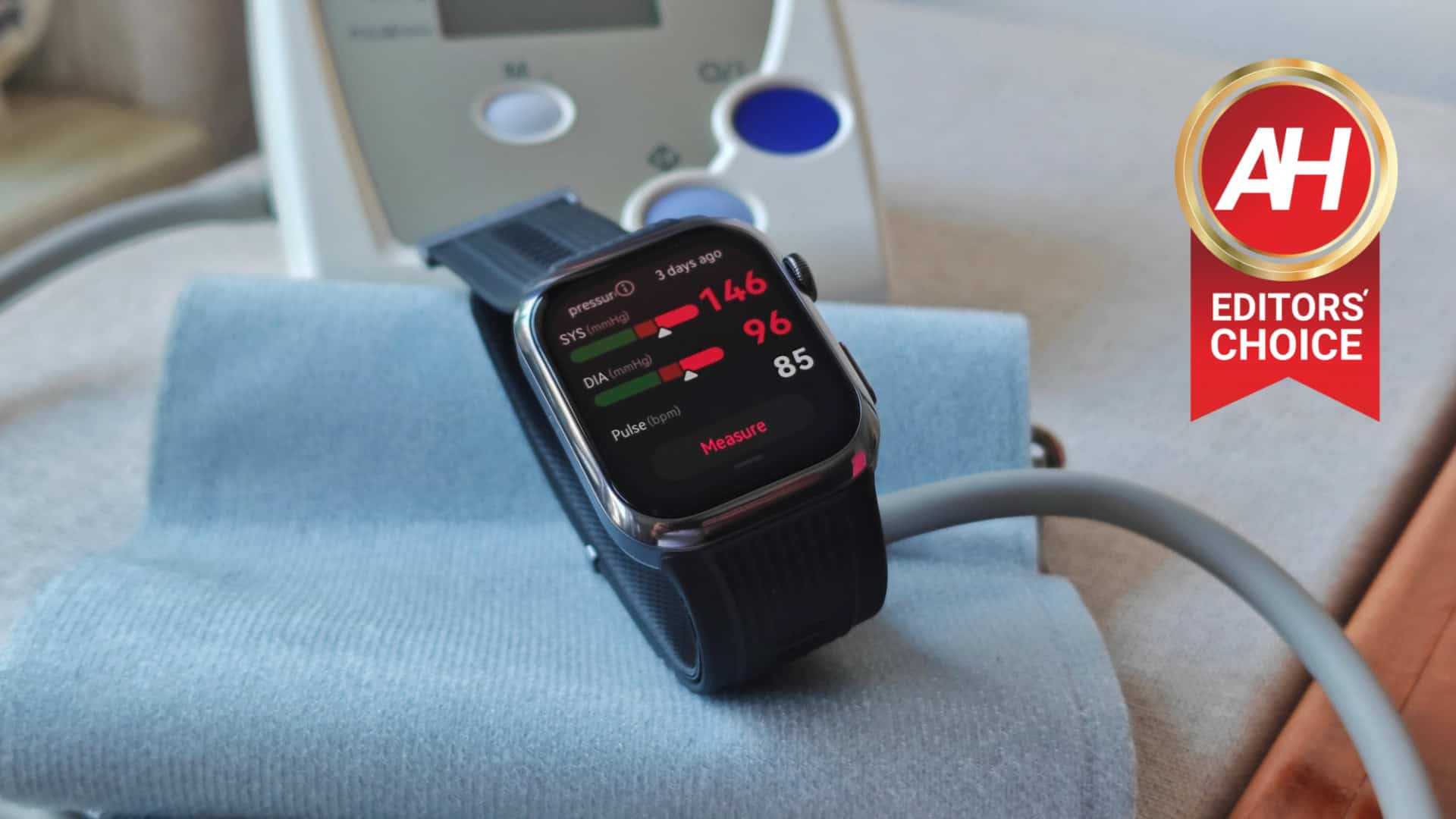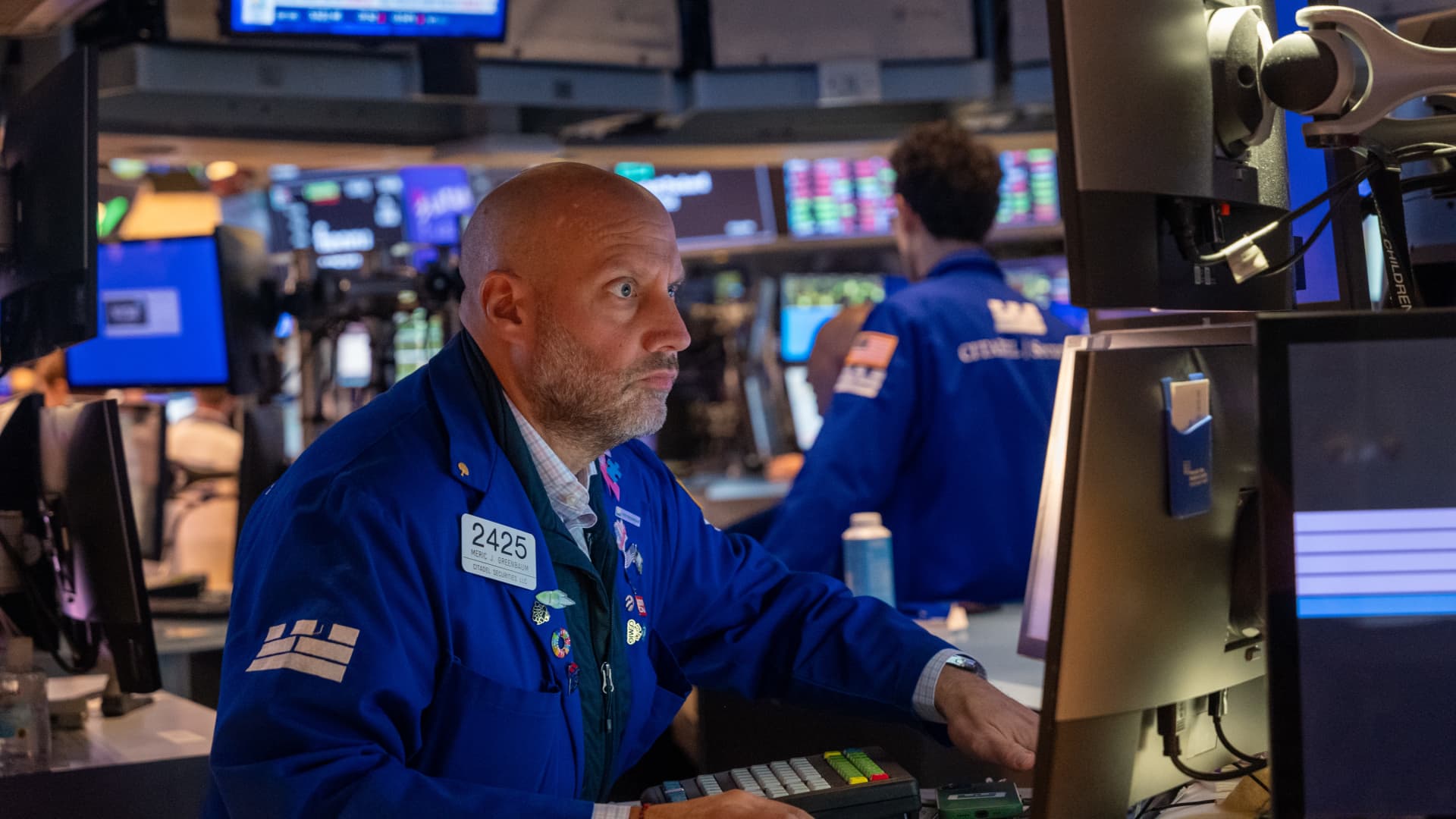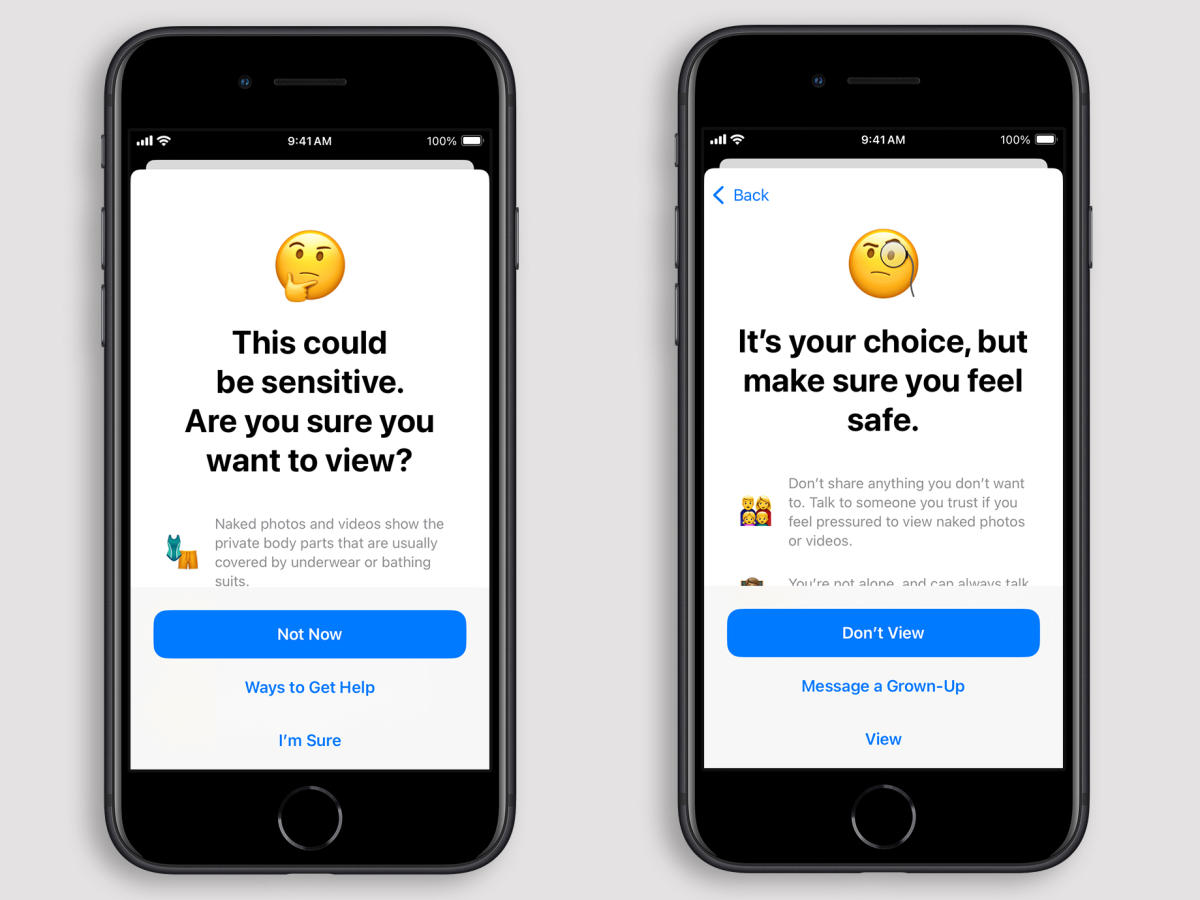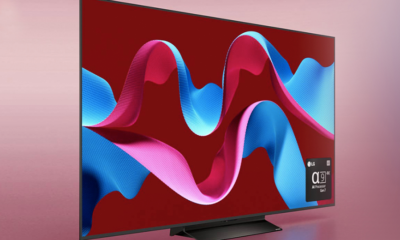Technology
Monitor Your Blood Pressure with Ease

The Huawei Watch D was announced back in mid-2022. It took Huawei over two years to deliver its successor, and now it’s here. That’s the device that I’m here to review for you, the Huawei Watch D2. This smartwatch launched alongside the Huawei Watch GT 5 and Huawei Watch GT 5 Pro. So, there’s plenty to choose from in Huawei’s current smartwatch lineup, if you’re looking for a higher-end smartwatch, that is.
The Huawei Watch D2 is notably different than the other two watches, however. This is the watch you’ll look to if you prefer squarish watches, and if you need a medical-grade blood pressure monitor on your hand. It can, of course, do a ton of other things, similar to its siblings, but this is its main selling point, without a doubt. So, let’s see if the Huawei Watch D2 is worth your hard-earned cash.
Huawei Watch D2 Review: Hardware / Design
The Huawei Watch D2 is made out of aluminum and glass. It has a rectangular shape, as you can see, with rounded corners. This watch is considerably smaller and lighter than its predecessor, which is a very important difference. It actually feels like a regular smartwatch on your hand. Its strap is wider than on your regular smartwatch, though, and it comes in two layers due to proper blood pressure monitoring. More on that later.
It has a squarish display that is also flat
There is a flat display included on this smartwatch, but it does have curved glass on top of it. The curve is quite subtle, though. The display is very comfortable to use. On the right side, you’ll spot two buttons. The top button also rotates. It is very clicky, and it actually feels like a quality piece of tech. The haptic feedback upon rotation is very good too, and I appreciate that Huawei gives texture to that button. That actually means a lot when you rotate it frequently.
Be bottom button has a similar clickiness to the top one, but it feels different to use. It’s longer and wider too. That button is set for blood pressure monitoring by default, but you can change that to whatever you like. There is a speaker placed on the left-hand side of this watch, and a microphone sits right next to it. There are not lugs on this watch, as the watch band goes straight into the watch’s frame. This watch needs to have a specific type of strap for blood pressure monitoring, so that makes all the sense in the world.

It is IP68 certified despite its special strap
Another thing worth noting is that the watch is IP68 certified. It is water and dust resistant, which is a great feat considering its blood pressure feature. It does not, however, have the 5ATM rating or anything of the sort. So you should not wear this watch while you’re diving, nor while you’re in a sauna or a hot bath. It’s fine for taking showers, rain, a quick swim and so on.
The Watch comes in two color options, Black and Gold. The ‘Black’ model includes a black strap and a dark gray frame. The ‘Gold’ model has a white strap and a bronze frame. The straps are also made out of different materials. The one we received is black, and it’s a fluoroelastomer strap. The one on the ‘Gold’ model is called the ‘White Composite Leather Strap’, as leather is a part of the equation. It is worth noting that you do get two strap sizes in the box, depending on your wrist size.
You also get a measure tape, which will determine what strap size and cuff you need, for your specific wrist. So make sure to use that before you start using the watch. Both straps are adjustable too, in terms of length, and they simply click into place when you place them on the wrist, as long as you have the right length set.
This watch needs the included strap to utilize its most special feature
What’s special about the straps here, is that they have an airbag on the inside that runs all along the length of them. So they’re double-layered, in a way. There is a pump located in the watch, that inflates those airbags for blood pressure measurements. When not in use, though, it’s basically not noticeable on the inside. Huawei made it as compact as possible. One thing worth noting is that this material is not all that breathable. Thanks to that airbag, your wrist may get a bit toasty, depending on the climate where you live. That’s something that crossed my mind, but it’s not exactly hot here, so I had no such problems. We’ll talk more about blood pressure monitoring later on. In addition to the straps, and the tape measure, you also do get a wireless charging puck in the package which magnetizes to the watch itself.
Huawei Watch D2 Review: Display
The Huawei Watch D2 has a rectangular display, unlike the Watch GT 5 and GT 5 Pro models that launched alongside it. Huawei included a 1.82-inch AMOLED panel here, it has a 480 x 408 resolution. The PPI here is 347, in case you’re wondering. This display is excellent in almost every way that matters. It is vivid, has great viewing angles, and its touch sensitivity is just right. It’s more than sharp enough, while the blacks are as inky as you’d expect them to be from an OLED panel.
The display is great, but automatic brightness needs work
That was the case with a number of displays on previous Huawei watches, so I’m not one bit surprised. In terms of brightness, well, that’s where I stumbled onto my first problem. The brightness itself is not a problem, at all, the watch does get immensely bright when you fire up the brightness manually. When I turned on automatic brightness, it was often too dim for my liking. There is no way to leave it on automatic brightness and just tune that to your liking, unfortunately. This is something that I’ve spotted on some of the previous watches from the company, but Huawei fixed it quickly via an update. So… chances are the same will be the case here.
Huawei also needs to balance out the flick gesture
Something similar can be said for another annoying problem, the motion to power on the display when you flick your wrist. It works great on the Huawei Watch GT 5 Pro, which I reviewed recently, but not here. It is too sensitive. Let me give you an example. While I was driving, the watch was powering on the display all the time as my hand was making slight movements on the steering wheel. It was powering it on constantly. Huawei needs to optimize that a bit, but that’s something they can easily do via an update, and something they’ve done on previous watches, so… I’m not really worried, to be quite honest.

Huawei Watch D2 Review: Performance
Huawei smartwatches have been great in terms of performance for quite some time now. Just to be clear, I’m talking about general watch performance, as in going through menus, opening apps, etc. Everything has been smooth for years, and it’s not different now. Huawei did bring over new HarmonyOS version here, and with it improved animations, though. That does improve the overall feel of using the watch, that’s for sure.
The performance is great, there’s no lag in sight
The performance overall is as good as you’d get on the Huawei Watch GT 5 and Watch GT 5 Pro. We don’t know what chip Huawei used here, nor how much RAM the company included. I usually expect to see such information in the spec sheet, but some companies opt to leave it out for smartwatches. Considering how well previous Huawei watches aged in terms of performance, I’m not worried about this one at all.
Overall use of the UI and everything you can navigate in and out of was extremely smooth. I did not see a touch of lag while using the watch. Well, a stutter or two did occur, but it does on every product, it’s just a momentary lapse. In general, the performance was outstanding.
Huawei Watch D2 Review: Battery
Is the battery life any good? Well, yes, actually it’s great compared to Wear OS watches and the Apple Watch, but it’s not as good as the larger Huawei Watch GT 5 and Watch GT 5 Pro deliver. That is to be expected, though. So, during Huawei’s testing, the company was able to get 6 days worth of use with ‘typical usage’. That included a specific scenario of used features. Huawei also noted that if you enable ABPM (Ambulatory Blood Pressure Monitoring) with 15-minute intervals, you’re looking at a 1-day battery life. You’re unlikely to do that, though. Well, perhaps some of you, but it’s not advised in regards to battery life.
This watch offers 5-6 days’ worth of battery life
During my testing of this watch, I was able to pull out around 5 days’ worth of battery life, two times in a row. Do note that I fired up pretty much every feature I could other than ABPM and always on display. I also wore the watch while showering, and was stuck in a rain shower too. Not that it matters for battery life, but I want to give you a full picture. I also received a ton of various notifications, used the watch for music control, and had around 6 workout sessions in those 10 days.
I got spoiled by the Huawei Watch GT 5 Pro battery life prior to reviewing this watch, so this is not as impressive. When I remember worrying about charging Wear OS devices, however, this is great. It all depends on the perspective. Chances are you won’t have to charge this smartwatch for days, though. It’ll all depend on your usage, of course.
It can fully charge in less than an hour
Speaking of charging, it’s conducted via a magnetic charging puck. The watch sits in place when you bring it close to that puck, which has a Type-A port for you to plug it in. It took me around 45 minutes to fully charge the watch, in case you’re wondering. It was not fully dead, though, but it was well under a 10% charge on both occasions.
Huawei Watch D2 Review: Software
The Huawei Watch D2 ships with HarmonyOS 5.0. That is Huawei’s proprietary software that has been on the company’s smartwatches for a while now. It is the same version as the one that ships on the Huawei Watch GT 5 and Huawei Watch GT 5 Pro. It’s similar to the HarmonyOS 4.X, but with a number of refinements brought to the table. This version of the OS feels very, very smooth, the smoothest yet. The animations are actually the first thing I’ve noticed, they’re not all that much different than before, but feel different.
Familiar OS layout is on offer here
The layout is still the same as it was on the previous watches. Your quick toggles can be accessed by swiping down while accessing notifications requires the opposite swipe on the home screen. Your widget screens are on the right, while the wather and media controls are on the left on a vertical list, sort of. It’s a rather familiar setup at this point, and other OS’ do things rather similarly in that regard. Accessing a full list of your apps requires a press on the rotating button.

This watch is heavily focused on health and fitness, so the vast majority of apps are dedicated to that. That’s something we’ll focus more on in the next section. What else is there, though? Well, you can access your Call Logs, Contacts, Notifications, Music, Weather, Wallet, Stopwatch, Timer, and so on from the app screen. Yes, you can install more apps on the watch but do note that there are not that many choices in the store, at least not for well-known smartwatch apps. The vast majority of people won’t need any of those, though, as you get everything you need pre-installed on the watch, basically. Just note that the ‘Wallet’ app will not work in most markets, you’ll need to use Curve for that.
The notifications are great with a one slight annoyance
That leaves us with… notifications. The first thing worth noting is that the notification cards look great. You do get plenty of information in there, especially if you actually press on a card. You can set up pre-written responses to notifications, or respond via emoticons. Some apps also support full keyboard responses, though not all of them. Every time you get a notification, an orange icon will pop up at the bottom of the display every time you flick your wrist in order to power on the display. That’s a great way of the watch actually tell you that you have new notifications. That was not present in the previous version of HarmonyOS.
The notifications sync only one way, and that’s a good thing in my book
Another very important thing to note when it comes to notifications is that they don’t sync both ways. What do I mean by that? If you dismiss a notification on your phone, it will be dismissed on the watch too. If you dismiss it on your watch, it will stay on your phone. That’s actually the way I prefer to have it, otherwise I miss a ton of notifications/messages. It is worth noting, though, as some people may prefer it to function in a different way. The notifications were always on time for me, everything was fine in that regard. Just make sure to lock the Huawei Health app in the background in every way possible. Also, you’ll need to grab Huawei Health either from the AppGallery or directly from Huawei’s website, it’s not available in the Google Play Store.

I generally had a great experience with notifications, but one thing did bother me. For some apps, icons are not showing up properly on the watch. You do get a generic icon instead of the icon that is supposed to be there. The vast majority of apps are fine, but not all of them.
Huawei Watch D2 Review: Health & Fitness
As I mentioned already, this watch is heavily focused on fitness and health. Its main selling point is medical-grade blood pressure monitoring. Let’s talk about that first, and then we’ll get around to various other features it offers. The watch comes with a special strap, as mentioned earlier, which has an airbag on the inside, and a pump attached to it. You’ll need to position yourself and the watch properly to utilize that feature, though. How do you do that? Well, you’ll start by resting for at least 5 minutes, preferably lying down, relaxed.
You need to follow instructions for blood pressure measurements
At that point, we can begin. It would be best if you sit down while you measure your blood pressure, and you need to be in a quiet room. You’ll need to extend your arm to be in line with your heart and support its elbow with the palm of your other arm. You should be in a natural sitting position with your feet touching the ground. Also, do your best not to press down on the airbag too much, simply lay your hand on your chest, don’t press hard or anything like that. You can tap the option to measure blood pressure at that point, at which point a 5-second countdown will commence. Return your other hand where it was, supporting your hand via which you’re measuring blood pressure, and we’re off.

While you’re measuring blood pressure, do prepare yourself to feel pressure around your wrist. That airbag on the inside needs to inflate in order to do its job. The watch will let you know when it’s done measuring your heart rate. It will also let you know when the measurement may not be correct for some reason.
The Huawei Watch D2 also offers ABPM scheduling
In addition to standard, manual blood pressure monitoring, this watch also offers ABPM (Ambulatory Blood Pressure Monitoring). This feature basically measures blood pressure at present intervals over a 24-hour period. It then calculates your averages for the whole day, daytime, and nighttime, and analyzes your BP rhythm. That data is then processed and used for hypertension and cardiovascular/cerebrovascular risk assessment. As mentioned earlier in the review, this will drain more battery, of course, it all depends on your settings.
So, what’s my experience with blood pressure monitoring here? Well, I did have a couple of unable-to-complete readings, but that was my fault for not following the instructions. Once I did that, I was able to get proper readings. The thing is, the readings provided by the watch were a bit different than the readings provided by my dedicated blood pressure monitor, the battery-powered one. Truth be said, it’s quite old, so I’m not really sure which one was more accurate. What I’ll say is that the Huawei Watch D2 was rather consistent in terms of blood pressure monitoring. I waited 5-10 minutes between measurements, and I did not get vastly different results, so it was consistent. As long as you follow the instructions I believe this can be a rather useful tool. I did have a spike in my blood pressure recently due to some health issues, so this watch certainly came in handy. It was really, really useful to have.

There are over 80 exercise modes for you to utilize
What else is there on offer here? Well, a lot, actually. In terms of exercise/sports modes, there are over 80 of them available here. The watch can auto-detect six of them, including Outdoor/Indoor run, Outdoor/Indoor walk, Elliptical, and Rower. All the others you’ll have to activate manually, and there’s really a lot to choose from here. Regardless of whether you’re in running, biking gym, or something else entirely, this watch has you covered.
It did a great job tracking my biking and gym sessions, actually. The GPS worked flawlessly, and it picked up the signal almost instantly. That was a bit surprising as it doesn’t have that fancy multi-band support, but that was not an issue at all. My reps with the kettlebells and dumbells were tracked really well too. I could not really try out all the modes here, but based on what I’ve seen, the watch does a great job. It also did great when it came to tracking my heart rate. The improved TruSense system that Huawei deployed here is doing a really good job.
Arterial stiffness is included, stress level measurements, and much more
The watch also has arterial stiffness measurements, it can measure your stress levels and much more. Breathing exercises are at your disposal here, while the watch can also measure your skin temperature. What about sleep tracking you ask? Well, that’s the feature I’m usually the least impressed with when it comes to smartwatches. The same was the case here, actually.

It did a good job overall, but one area where sleep tracking always fails for me is in the morning. The watch never knew when I was awake as I usually spent about 20-30 minutes in bed going through the latest news, usually for work. It usually counts that time as me being asleep. The same goes for tracking sleep stages, the Huawei Watch D2 didn’t do a particularly great job with that either. Everything else in the realm of sleep tracking was good, though. It’s the feature that impressed me the least out of the whole armada of health and fitness features this watch has to offer.
Huawei Watch D2 Review: Audio
The Huawei Watch D2 does have a speaker, it’s included on the left side. That’s also where you’ll find its microphone. Yes, you can listen to music via that loudspeaker, if you really want to, but it’s there mainly for phone calls and various notification sounds. The speaker is good for what it is, but don’t expect too much from it. this is, after all, a smartwatch speaker, and not something you’d find on a smartwatch. With that in mind, it’s better than most speakers on smartwatches I’ve had the pleasure of using. Though again, manage your expectations. As long as you’re not in a loud environment, you’ll be able to hear the person on the other end of the line without a problem.

What about the microphone? Well, based on the feedback I got from my mother, two friends, and my wife, it’s good, but I sounded different than I usually do. Of course, you won’t be able to get the same quality as you would via a phone, but it’s good overall, it would seem. Yes, you can make phone calls with it thanks to Bluetooth calling. I never really use that feature for my personal needs, but I know a couple of people who really like talking via their watch, for whatever reason. So, if you want to, that’s certainly an option here.
Huawei Watch D2: Should you buy it?
The Huawei Watch D2 is not a cheap smartwatch. Getting this watch over the Huawei Watch GT 5 or GT 5 Pro means that you really need that blood pressure monitoring feature, and you also love square watches. In all honesty, if you prefer circular watches, and don’t need the blood pressure monitoring feature, going for the Watch GT 5 or Watch GT 5 Pro seems like a better option.
However, most people looking into this watch want it for its flagship feature, and if that’s the case, there’s really nothing to compare it to out there, at least not mainstream that does a good job on the same level as this one. If you have problems with blood pressure and need something on the go to keep an eye on it… this can be your solution. It’s lighter than you think, and it also looks really good on the hand. Huawei really managed to polish it out compared to the first-gen model.

You should buy the Huawei Watch D2 if you:
…have blood pressure problems
…don’t want to carry around a blood pressure monitor
…like square watches
…want good battery life
…appreciate wireless charging
…need a good display on a smartwatch
You shouldn’t buy the Huawei Watch D2 if you:
…prefer circular watches
…don’t need the blood pressure monitor feature
…like exchanging watch straps
…want to go diving with a watch
Technology
NYT Crossword: answers for Monday, October 28


The New York Times crossword puzzle can be tough! If you’re stuck, we’re here to help with a list of today’s clues and answers.
Technology
How technology and expertise are shaping safety standards

As fire hazards continue to pose a significant risk across diverse industries, the role of fire watch services is substantially transforming. Once an essential compliance requirement, fire watch services now integrate advanced technology with specialized expertise to enhance safety and preparedness. Leading companies like Fast Fire Watch Guards are shaping this shift, utilizing innovative tools and skilled teams to meet today’s rigorous safety standards. In a landscape where rapid response and proactive risk management are crucial, these trends redefine fire safety practices and elevate industry expectations.
Leveraging technology for enhanced fire watch services
Integrating technology in fire watch services has transformed how professionals monitor and prevent potential hazards. Many fire watch companies now utilize GPS tracking and geo-fencing, allowing for precise guard movement tracking and area coverage. This ensures a complete, real-time log of all activities, a critical feature in locations requiring continuous monitoring. Additional layers of safety are provided by remote sensors, thermal imaging, and AI-powered surveillance systems that can identify temperature changes or early fire indicators and sound alerts before security personnel get on the scene. In addition to improving overall safety, this proactive approach to fire prevention shows how technology is changing the business. Firewatch companies are increasingly adopting these innovations to stay ahead of potential dangers, ultimately providing clients with a higher standard of security.
Expertise in action – the role of skilled fire watch guards
Effective fire protection still relies heavily on the knowledge of fire watch guards, even though technology plays a vital role. After completing extensive training, fire watch guards are prepared to manage a variety of situations, from managing building sites to protecting important public gatherings. This expertise ensures that guards can quickly assess and respond to potential fire hazards, preventing incidents before they escalate. Companies like Fast Fire Watch Guards emphasize the importance of continuous training keeping their teams updated on the latest safety protocols and fire watch standards. Combining hands-on expertise with technology enables guards to operate confidently, providing clients a co mprehensive service beyond essential monitoring. Skilled fire watch guards are proficient in fire prevention and possess the interpersonal skills needed to manage situations calmly and efficiently.
Rapid response and nationwide coverage
One of the primary challenges in fire watch services is ensuring rapid deployment across diverse locations. Businesses in high-risk industries require reliable fire watch services on short notice, and nationwide companies have responded by establishing fast-response protocols. Companies like Fast Fire Watch Guards can dispatch teams within hours, a crucial capability in urgent situations where immediate fire watch coverage is mandatory. Rapid response times not only mitigate risks but also demonstrate the agility and preparedness of fire watch service providers. This nationwide reach means that businesses can access dependable fire watch services regardless of location, contributing to a safer environment across multiple sectors. The assurance of rapid, expert deployment elevates the value and reliability of fire watch companies.
Ensuring compliance with safety regulations
Compliance with fire safety regulations is a primary driver behind the demand for professional fire watch services. Regulatory bodies impose strict safety standards on construction sites, commercial buildings, and event spaces to prevent fire-related incidents. A professional Fire Watch Services Company ensures businesses meet all fire safety requirements, avoiding potentially significant fines and reputational damage. In addition to supplying guards, fire watch firms also provide advice on upholding safety procedures, carrying out risk analyses, and being ready for inspections. Businesses may guarantee ongoing compliance and take advantage of the company’s proficiency in managing intricate fire safety standards by collaborating with seasoned fire watch services.
This compliance-focused approach makes fire watch services essential to operational safety for various industries.
The future of fire watch services and safety standards
As fire watch services evolve, the future holds promising advancements that will further improve safety standards. Incorporating AI in risk prediction, more sophisticated monitoring tools, and enhancement in guard training are expected to redefine the industry. Firewatch companies are at the forefront of these changes, adapting to new technologies and refining their practices to serve their clients better. Fast Fire Watch Guards and similar companies are committed to staying informed and agile, ensuring that their services meet the rising demands of safety compliance. We can expect fire watch services to become even more efficient in the future, providing clients with unparalleled peace of mind. The shift towards a technology-driven, expert-based service model reshapes fire watch services as a crucial component of modern safety strategies.
The fire watch services sector is expanding quickly as businesses invest in qualified staff and embrace state-of-the-art technology to satisfy rising safety regulations. Businesses like Fast Fire Watch Guards, who offer a dependable and competent service that meets the specific requirements of different sectors, are prime examples of striking a balance between technology innovation and human competence. Businesses should anticipate increasingly stronger assistance in protecting their operations, guaranteeing compliance, and improving general safety as fire watch services develop. Fire watch services are in a strong position to become an essential part of nationwide risk management plans as a result of these new developments.
Science & Environment
Nasdaq hits high even amid poor earnings growth

Traders work on the floor of the New York Stock Exchange (NYSE) on October 22, 2024 in New York City.
Spencer Platt | Getty Images
This report is from today’s CNBC Daily Open, our international markets newsletter. CNBC Daily Open brings investors up to speed on everything they need to know, no matter where they are. Like what you see? You can subscribe here.
What you need to know today
New high for Nasdaq
On Friday, the Nasdaq Composite hit an all-time high, but the S&P 500 and Dow Jones Industrial Average fell and snapped their six-week winning streaks. Asia-Pacific markets traded mixed Monday. Japan’s Nikkei 225 jumped about 1.8% and the yen weakened to a three-month low against the dollar on the back of the country’s election results.
Steepest drop since pandemic
China’s industrial profits in September slumped 27.1% from a year ago, according to the country’s National Bureau of Statistics. That’s the steepest drop since the start of the pandemic in March 2020, based on data from Wind Information – which excludes statistics from most of 2022 when China was under strict zero-Covid policies.
Oil prices dropped on ‘limited damage’
Prices for both Brent and West Texas Intermediate oil futures dropped more than 4% on Monday. This comes after Iranian media described Israel’s strikes over the weekend on its military installations as causing “limited damage.” Citi lowered its forecast for Brent oil prices by $4 to $70 per barrel over the next three months.
Japan’s ruling coalition loses parliamentary majority
Japan’s Liberal Democratic Party and its Komeito partner will lose their parliamentary majority, according to projections from public broadcaster NHK and publication Nikkei Asia, while the opposition camp made significant gains. The Japanese yen fell against the U.S. dollar on the political uncertainty.
[PRO] Very, very busy week for markets
This week is jam-packed with important earnings and economic data. Five of the Magnificent Seven companies report earnings. The personal consumption expenditures index report for September and the key jobs report for October will also be released this week.
The bottom line
The Nasdaq Composite managed to log a seventh consecutive winning week.
After adding 0.56% on Friday, the index closed at an all-time high, ending the week 0.2% higher.
Other major U.S. indexes, however, didn’t do so well. Both the S&P 500 and Dow Jones Industrial Average shattered their six-week positive streak following their falls on Friday.
The tech-heavy Nasdaq was boosted by Tesla’s monster rally. Investors also looked ahead to Big Tech earnings coming out this week: shares of Meta, Amazon and Microsoft added as much as 1%.
Earnings season has been a mixed bag so far. Even though almost three-quarters of S&P companies have beaten expectations, according to FactSet data, the rate of profit growth has not met expectations, disappointing investors.
Tesla had a monster rally over two days last week, which helped it regain all its losses for the year. But more than half of the 20-largest companies saw their stocks fall after they announced their financials last week, notes CNBC’s Pia Singh.
As those companies were mostly from sectors outside tech, their losses dragged down the S&P and the Dow, especially, since a good proportion were constituents of the 30-stock index. In fact, around 90% of Dow members ended the week in the red.
For instance, Coca-Cola surpassed Wall Street’s estimates of its earnings and revenue, but its shares still fell. Investors were perhaps disappointed by news that consumers are buying fewer packs of Coke products, as CEO James Quincey said during the post-earnings conference call, and troubled by the headwinds that the company thinks will hamper its growth in 2025.
With five of the Magnificent Seven companies reporting earnings and crucial economic data coming out this week, investors will hope all the numbers line up for a payout – if not of the jackpot magnitude, then at least one that jolts the S&P and Dow back into the green again.
— CNBC’s Brian Evans, Pia Singh and Alex Harring contributed to this report.
Technology
iOS 18.2 has a child safety feature that can blur nude content and report it to Apple

In iOS 18.2, Apple is adding a new feature that resurrects some of the intent behind its halted CSAM scanning plans — this time, without breaking end-to-end encryption or providing government backdoors. Rolling out first in Australia, the company’s expansion of its Communication Safety feature uses on-device machine learning to detect and blur nude content, adding warnings and requiring confirmation before users can proceed. If the child is under 13, they can’t continue without entering the device’s Screen Time passcode.
If the device’s onboard machine learning detects nude content, the feature automatically blurs the photo or video, displays a warning that the content may be sensitive and offers ways to get help. The choices include leaving the conversation or group thread, blocking the person and accessing online safety resources.
The feature also displays a message that reassures the child that it’s okay not to view the content or leave the chat. There’s also an option to message a parent or guardian. If the child is 13 or older, they can still confirm they want to continue after receiving those warnings — with a repeat of the reminders that it’s okay to opt out and that further help is available. According to The Guardian, it also includes an option to report the images and videos to Apple.
The feature analyzes photos and videos on iPhone and iPad in Messages, AirDrop, Contact Posters (in the Phone or Contacts app) and FaceTime video messages. In addition, it will scan “some third-party apps” if the child selects a photo or video to share with them.
The supported apps vary slightly on other devices. On Mac, it scans messages and some third-party apps if users choose content to share through them. On the Apple Watch, it covers Messages, Contact Posters and FaceTime video messages. Finally, on Vision Pro, the feature scans Messages, AirDrop and some third-party apps (under the same conditions mentioned above).
The feature requires iOS 18, iPadOS 18, macOS Sequoia or visionOS 2.
The Guardian reports that Apple plans to expand it globally after the Australia trial. The company likely chose the land Down Under for a specific reason: The country is set to roll out new regulations that require Big Tech to police child abuse and terror content. As part of the new rules, Australia agreed to add the clause that it was only mandated “where technically feasible,” omitting a requirement to break end-to-end encryption and compromise security. Companies will need to comply by the end of the year.
User privacy and security were at the heart of the controversy over Apple’s infamous attempt to police CSAM. In 2021, it prepared to adopt a system that would scan for images of online sexual abuse, which would then be sent to human reviewers. (It came as something of a shock after Apple’s history of standing up to the FBI over its attempts to unlock an iPhone belonging to a terrorist.) Privacy and security experts argued that the feature would open a backdoor for authoritarian regimes to spy on their citizens in situations without any exploitative material. The following year, Apple abandoned the feature, leading (indirectly) to the more balanced child-safety feature announced today.
Once it rolls out globally, you can activate the feature under Settings > Screen Time > Communication Safety, and toggle the option on. That section has been activated by default since iOS 17.
Technology
Filigran secures $35M for its cybersecurity threat management suite

Paris-based startup Filigran is fast becoming the next cybersecurity rocketship to track: The company just raised a $35 million Series B round, only a few months after it raised $16 million in a Series A round.
Filigran’s main product is OpenCTI, an open-source threat intelligence platform that lets companies or public sector organizations import threat data from multiple sources, and enrich that data set with intel from providers such as CrowdStrike, SentinelOne or Sekoia.
The open-source version of OpenCTI has attracted contributions from 4,300 cybersecurity professionals and been downloaded millions of times. The European Commission, the FBI and the New York City Cyber Command all use OpenCTI. The company also offers an enterprise edition that can be used as a software-as-a-service product or hosted on premises, and its clients include Airbus, Marriott, Thales, Hermès, Rivian and Bouygues Telecom.
Filigran has been capitalizing on that success to add other products and build a full-fledged cybersecurity suite dubbed eXtended Threat Management (XTM) suite.
Another product is OpenBAS, a beach and attack simulation platform. You can use OpenCTI and OpenBAS separately, but using them supposedly together provides a better overview of the potential risks.
Filigran is taking advantage of the fact that it’s always easier to launch a second product when your first product is popular. The startup is already working on its third product.
“By 2026, our goal is to offer a comprehensive suite of three complementary products, providing end-to-end solutions in threat management that directly address the complex cybersecurity challenges faced by modern organizations,” co-founder and CEO Samuel Hassine told TechCrunch.
Interestingly, Filigran is also drawing inspiration from GitHub and Hugging Face, the main hubs for open-source software development and artificial intelligence development, respectively. Filigran wants to launch XTM Hub — “a collaborative platform designed to empower the cybersecurity community” — by the end of the year, Hassine said.
“The hub will serve as a central forum where users can access resources, share tradecraft and connect with others in the Filigran ecosystem,” he added.
Insight Partners is leading the Series B round, with existing investors Accel and Moonfire investing once again. In addition to product development, a portion of this funding round will be used to expand Filigran’s presence in other regions. The company operates in France, the U.S. and Australia, and plans to expand to Germany, Japan and Singapore.
Science & Environment
Foreign investors flock to flagship Saudi economic conference

A delegate arrives at the King Abdulaziz Conference Centre in Saudi Arabia’s capital Riyadh to attend the Future Investment Initiative (FII) forum on October 29, 2019. – Top finance moguls and political leaders were expected at a Davos-style Saudi investment summit in stark contrast to last year when outrage over critic Jamal Khashoggi’s murder sparked a mass boycott. Organisers say 300 speakers from over 30 countries, including American officials and heads of global banks and major sovereign wealth funds, are attending the three-day forum. (Photo by FAYEZ NURELDINE / AFP) (Photo by FAYEZ NURELDINE/AFP via Getty Images)
Fayez Nureldine | Afp | Getty Images
Thousands of financiers, founders and investors are set to descend on the Saudi capital of Riyadh for the eighth edition of the kingdom’s Future Investment Initiative, the flagship economic conference at the heart of Vision 2030 — the multi-trillion dollar plan to modernize and diversify Saudi Arabia’s economy.
Described in past years by some attendees as a bonanza for Saudi cash, fund managers who spoke to CNBC this year draw a distinctly different picture as the kingdom simultaneously upholds more requirements for prospective fundraisers and investors, while also facing a revenue crunch amid lower oil prices and production.
“Without question, it’s gotten way more competitive to attract money from the kingdom,” Omar Yacoub, a partner at U.S.-based investment firm ABS Global, which manages nearly $8 billion in assets, told CNBC. “Everyone and anyone has been going to ‘kiss the rings,’ so to speak, in Riyadh.”
“Competition for capital has heated up, combined with other factors such as Saudis always having a ‘home bias’ towards investing, plus the broader dynamic of a tighter budget throughout the kingdom due to lower oil prices,” Yacoub said. “This has meant that investing internationally has become much more selective.”
As Saudi Arabia moves full steam ahead with its focus on domestic investment, it’s introduced more stringent conditions for foreigners coming to the kingdom to take capital elsewhere. The kingdom’s $925 billion sovereign wealth fund, the Public Investment Fund, saw its assets jump 29% to 2.87 trillion Saudi riyals ($765.2 billion) in 2023 — and local investment was a major driver.

Saudi Arabia’s recently-updated Investment Law seeks to attract more foreign investment as well — and it’s set itself a lofty target of $100 billion in annual foreign direct investment by 2030. Currently, that figure is still a long way from that goal as foreign investment has averaged around $12 billion per year since Vision 2030 was announced in 2017.
“It’s no longer about ‘take our money and leave’ — it’s about adding value,” said Fadi Arbid, founding partner and chief investment officer of Dubai-based investment manager Amwal Capital Partners. “Value meaning hiring, developing the asset management ecosystem, creating new products, bringing in talent, and investing in Saudi capital markets also. So it’s multi-faceted investment, not only a pure financial transaction. It’s beyond that.”
‘More disciplined, more rational’
At the same time, the kingdom is taking clear steps to scale back spending, as oil prices fall well below its fiscal breakeven figure and it continues with crude production cuts agreed upon by OPEC+.
That fiscal breakeven oil price — what the kingdom needs a barrel of crude to cost in order to balance its government budget — has risen sharply as Saudi Arabia pours trillions of dollars into giga-project NEOM.
The IMF’s latest forecast in April, put that breakeven figure at $96.20 for 2024; a roughly 19% increase on the year before, and about 28% higher than the current price of a barrel of Brent crude, which was trading at around $72.75 as of Monday morning.
“I don’t think Saudi has the same means that they had literally two years ago,” one regional investor, who requested anonymity in order to speak freely, said. Nonetheless, they added, the kingdom “remains one of the very few countries that still have money to give. It might be somewhat on pause today, but … now it’s more disciplined, more rational.”

Some fund managers with years of experience in the Gulf suggested it may be too little too late for many of the investors making their first forays to the kingdom.
“You should have started that process two, three, four years ago,” Arbid said. However, he added, “For those that are coming in queue now, that doesn’t mean that they shouldn’t position — because it’s a cycle, right? But now, I think they’re more deliberate about it — they say you need to commit to the country.”
One example is the kingdom’s headquarters law, which went into effect on Jan. 1, 2024, and requires foreign companies operating in the Gulf to base their Middle Eastern HQ offices in Riyadh if they want contracts with the Saudi government.
In the shadow of regional war
The glitzy conference, held in the opulent Ritz-Carlton Riyadh, also takes place against the backdrop of regional war and just over a year after Israel launched its war on Hamas in Gaza.
In that time, attacks between Israel and Iranian proxies including Hezbollah and Yemen’s Houthis have soared, with the Jewish state invading Lebanon in September. The region has been on tenterhooks awaiting Israel’s avowed revenge against Iran for its missile barrage over Tel Aviv and other parts of the country on Oct. 1.
Early on Saturday, Israel struck military sites in Iran targeting missile manufacturing factories. Israel’s military later said it had completed “targeted” attacks in Iran, adding that it was ready to “conduct defensive and offensive action.”
Oil prices and the Saudi economy appear to so far have stayed largely unscathed, dropping 4% early Monday after Israel’s weekend strike on Iran. A key reason for that may be the rapprochement deal the kingdom signed with Iran, brokered by China, in March 2023.

“Saudi has done a phenomenal job recently of shielding itself from geopolitical events,” Arbid said.
That is also aided by the fact that local investors make up the majority of market participants, and local investor confidence is strong. The Tadawul All Shares Index, Saudi Arabia’s leading stock market index, is up 16.48% in the last year.
Still, some analysts in the region warn that the expanding crises in the Middle East have the potential to cause further instability.
“The war has gradually escalated to the point where there is a de-facto regional war,” Aziz Alghashian, director of research at the Observer Research Foundation Middle East, told CNBC. “The ongoing war is not only a geopolitical crisis, but the continuation of it has potential to create more radicalization in and around the region.”
“Attracting FDI and tourism, while maintaining oil prices at a desired level, are key for keeping Saudi Arabia’s mega projects and diversification plans on track,” Alghashian said.
“This of course is complicated by regional war, and so economy and security go very much hand in hand.”
-

 Technology1 month ago
Technology1 month agoIs sharing your smartphone PIN part of a healthy relationship?
-

 Science & Environment1 month ago
Science & Environment1 month agoHow to unsnarl a tangle of threads, according to physics
-

 Science & Environment1 month ago
Science & Environment1 month agoHyperelastic gel is one of the stretchiest materials known to science
-

 Science & Environment1 month ago
Science & Environment1 month ago‘Running of the bulls’ festival crowds move like charged particles
-

 Science & Environment1 month ago
Science & Environment1 month agoMaxwell’s demon charges quantum batteries inside of a quantum computer
-

 Technology1 month ago
Technology1 month agoWould-be reality TV contestants ‘not looking real’
-

 Science & Environment1 month ago
Science & Environment1 month agoX-rays reveal half-billion-year-old insect ancestor
-

 Science & Environment1 month ago
Science & Environment1 month agoSunlight-trapping device can generate temperatures over 1000°C
-

 Technology4 weeks ago
Technology4 weeks agoUkraine is using AI to manage the removal of Russian landmines
-

 Science & Environment1 month ago
Science & Environment1 month agoLiquid crystals could improve quantum communication devices
-

 TV4 weeks ago
TV4 weeks agoসারাদেশে দিনব্যাপী বৃষ্টির পূর্বাভাস; সমুদ্রবন্দরে ৩ নম্বর সংকেত | Weather Today | Jamuna TV
-

 Technology3 weeks ago
Technology3 weeks agoSamsung Passkeys will work with Samsung’s smart home devices
-

 Sport4 weeks ago
Sport4 weeks agoBoxing: World champion Nick Ball set for Liverpool homecoming against Ronny Rios
-

 Science & Environment1 month ago
Science & Environment1 month agoQuantum ‘supersolid’ matter stirred using magnets
-

 Football4 weeks ago
Football4 weeks agoRangers & Celtic ready for first SWPL derby showdown
-

 Science & Environment1 month ago
Science & Environment1 month agoPhysicists have worked out how to melt any material
-

 Science & Environment1 month ago
Science & Environment1 month agoLaser helps turn an electron into a coil of mass and charge
-

 News3 weeks ago
News3 weeks agoMassive blasts in Beirut after renewed Israeli air strikes
-

 News3 weeks ago
News3 weeks agoNavigating the News Void: Opportunities for Revitalization
-

 MMA3 weeks ago
MMA3 weeks ago‘Uncrowned queen’ Kayla Harrison tastes blood, wants UFC title run
-

 Science & Environment1 month ago
Science & Environment1 month agoA new kind of experiment at the Large Hadron Collider could unravel quantum reality
-

 MMA4 weeks ago
MMA4 weeks agoDana White’s Contender Series 74 recap, analysis, winner grades
-

 News3 weeks ago
News3 weeks ago‘Blacks for Trump’ and Pennsylvania progressives play for undecided voters
-

 News3 weeks ago
News3 weeks ago▶ Hamas Spent $1B on Tunnels Instead of Investing in a Future for Gaza’s People
-

 Technology4 weeks ago
Technology4 weeks agoGmail gets redesigned summary cards with more data & features
-

 Football4 weeks ago
Football4 weeks agoWhy does Prince William support Aston Villa?
-

 Technology1 month ago
Technology1 month agoRussia is building ground-based kamikaze robots out of old hoverboards
-

 Womens Workouts1 month ago
Womens Workouts1 month ago3 Day Full Body Women’s Dumbbell Only Workout
-

 Technology4 weeks ago
Technology4 weeks agoMicrophone made of atom-thick graphene could be used in smartphones
-

 MMA4 weeks ago
MMA4 weeks agoPereira vs. Rountree prediction: Champ chases legend status
-

 Business3 weeks ago
Business3 weeks agoWhen to tip and when not to tip
-

 Sport3 weeks ago
Sport3 weeks agoAaron Ramsdale: Southampton goalkeeper left Arsenal for more game time
-

 Sport3 weeks ago
Sport3 weeks agoWales fall to second loss of WXV against Italy
-

 Technology4 weeks ago
Technology4 weeks agoMusk faces SEC questions over X takeover
-

 Sport3 weeks ago
Sport3 weeks agoMan City ask for Premier League season to be DELAYED as Pep Guardiola escalates fixture pile-up row
-

 Science & Environment1 month ago
Science & Environment1 month agoWhy this is a golden age for life to thrive across the universe
-
Business4 weeks ago
DoJ accuses Donald Trump of ‘private criminal effort’ to overturn 2020 election
-

 Technology4 weeks ago
Technology4 weeks agoMicrosoft just dropped Drasi, and it could change how we handle big data
-

 MMA3 weeks ago
MMA3 weeks agoKetlen Vieira vs. Kayla Harrison pick, start time, odds: UFC 307
-

 News4 weeks ago
News4 weeks agoWoman who died of cancer ‘was misdiagnosed on phone call with GP’
-

 Money3 weeks ago
Money3 weeks agoWetherspoons issues update on closures – see the full list of five still at risk and 26 gone for good
-

 Science & Environment1 month ago
Science & Environment1 month agoA slight curve helps rocks make the biggest splash
-

 Science & Environment1 month ago
Science & Environment1 month agoNuclear fusion experiment overcomes two key operating hurdles
-

 News1 month ago
News1 month ago▶️ Hamas in the West Bank: Rising Support and Deadly Attacks You Might Not Know About
-

 Technology1 month ago
Technology1 month agoMeta has a major opportunity to win the AI hardware race
-

 Science & Environment1 month ago
Science & Environment1 month agoQuantum forces used to automatically assemble tiny device
-

 Science & Environment1 month ago
Science & Environment1 month agoITER: Is the world’s biggest fusion experiment dead after new delay to 2035?
-

 Technology1 month ago
Technology1 month agoWhy Machines Learn: A clever primer makes sense of what makes AI possible
-

 Technology4 weeks ago
Technology4 weeks agoEpic Games CEO Tim Sweeney renews blast at ‘gatekeeper’ platform owners
-

 Sport4 weeks ago
Sport4 weeks agoSturm Graz: How Austrians ended Red Bull’s title dominance
-

 MMA3 weeks ago
MMA3 weeks ago‘I was fighting on automatic pilot’ at UFC 306
-

 Sport3 weeks ago
Sport3 weeks ago2024 ICC Women’s T20 World Cup: Pakistan beat Sri Lanka
-

 Technology4 weeks ago
Technology4 weeks agoThis AI video generator can melt, crush, blow up, or turn anything into cake
-
Business4 weeks ago
Sterling slides after Bailey says BoE could be ‘a bit more aggressive’ on rates
-

 News4 weeks ago
News4 weeks agoCornell is about to deport a student over Palestine activism
-

 Sport4 weeks ago
Sport4 weeks agoChina Open: Carlos Alcaraz recovers to beat Jannik Sinner in dramatic final
-

 News3 weeks ago
News3 weeks agoFamily plans to honor hurricane victim using logs from fallen tree that killed him
-

 Entertainment3 weeks ago
Entertainment3 weeks agoNew documentary explores actor Christopher Reeve’s life and legacy
-

 Science & Environment1 month ago
Science & Environment1 month agoNerve fibres in the brain could generate quantum entanglement
-

 MMA4 weeks ago
MMA4 weeks agoJulianna Peña trashes Raquel Pennington’s behavior as champ
-

 News3 weeks ago
News3 weeks agoHull KR 10-8 Warrington Wolves – Robins reach first Super League Grand Final
-
Business3 weeks ago
The search for Japan’s ‘lost’ art
-

 Technology3 weeks ago
Technology3 weeks agoThe best budget robot vacuums for 2024
-

 Sport3 weeks ago
Sport3 weeks agoCoco Gauff stages superb comeback to reach China Open final
-

 News4 weeks ago
News4 weeks agoRwanda restricts funeral sizes following outbreak
-
Business4 weeks ago
Bank of England warns of ‘future stress’ from hedge fund bets against US Treasuries
-

 Business4 weeks ago
Business4 weeks agoChancellor Rachel Reeves says she needs to raise £20bn. How might she do it?
-

 News3 weeks ago
News3 weeks agoGerman Car Company Declares Bankruptcy – 200 Employees Lose Their Jobs
-

 Technology3 weeks ago
Technology3 weeks agoTexas is suing TikTok for allegedly violating its new child privacy law
-

 Technology3 weeks ago
Technology3 weeks agoCheck, Remote, and Gusto discuss the future of work at Disrupt 2024
-

 Science & Environment1 month ago
Science & Environment1 month agoTime travel sci-fi novel is a rip-roaringly good thought experiment
-

 Science & Environment1 month ago
Science & Environment1 month agoHow to wrap your mind around the real multiverse
-

 News1 month ago
News1 month ago▶️ Media Bias: How They Spin Attack on Hezbollah and Ignore the Reality
-

 Business4 weeks ago
Business4 weeks agoStocks Tumble in Japan After Party’s Election of New Prime Minister
-

 Technology3 weeks ago
Technology3 weeks agoIf you’ve ever considered smart glasses, this Amazon deal is for you
-

 Football4 weeks ago
Football4 weeks agoSimo Valakari: New St Johnstone boss says Scotland special in his heart
-

 Technology4 weeks ago
Technology4 weeks agoJ.B. Hunt and UP.Labs launch venture lab to build logistics startups
-

 MMA3 weeks ago
MMA3 weeks agoKayla Harrison gets involved in nasty war of words with Julianna Pena and Ketlen Vieira
-

 MMA3 weeks ago
MMA3 weeks agoUFC 307 preview show: Will Alex Pereira’s wild ride continue, or does Khalil Rountree shock the world?
-
Business3 weeks ago
Head of UK Competition Appeal Tribunal to step down after rebuke for serious misconduct
-

 Business3 weeks ago
Business3 weeks agoStark difference in UK and Ireland’s budgets
-

 MMA3 weeks ago
MMA3 weeks agoPereira vs. Rountree preview show live stream
-

 Technology3 weeks ago
Technology3 weeks agoThe best shows on Max (formerly HBO Max) right now
-

 MMA3 weeks ago
MMA3 weeks ago‘Dirt decision’: Conor McGregor, pros react to Jose Aldo’s razor-thin loss at UFC 307
-

 Sport4 weeks ago
Sport4 weeks agoWorld’s sexiest referee Claudia Romani shows off incredible figure in animal print bikini on South Beach
-

 Science & Environment4 weeks ago
Science & Environment4 weeks agoMarkets watch for dangers of further escalation
-

 Technology3 weeks ago
Technology3 weeks agoApple iPhone 16 Plus vs Samsung Galaxy S24+
-
Politics4 weeks ago
Rosie Duffield’s savage departure raises difficult questions for Keir Starmer. He’d be foolish to ignore them | Gaby Hinsliff
-

 Technology3 weeks ago
Technology3 weeks agoOpenAI secured more billions, but there’s still capital left for other startups
-

 Health & fitness4 weeks ago
Health & fitness4 weeks agoNHS surgeon who couldn’t find his scalpel cut patient’s chest open with the penknife he used to slice up his lunch
-

 Money3 weeks ago
Money3 weeks agoPub selling Britain’s ‘CHEAPEST’ pints for just £2.60 – but you’ll have to follow super-strict rules to get in
-

 News1 month ago
News1 month agoOur millionaire neighbour blocks us from using public footpath & screams at us in street.. it’s like living in a WARZONE – WordupNews
-
Business4 weeks ago
how UniCredit built its Commerzbank stake
-

 MMA4 weeks ago
MMA4 weeks agoAlex Pereira faces ‘trap game’ vs. Khalil Rountree
-

 News4 weeks ago
News4 weeks agoLiverpool secure win over Bologna on a night that shows this format might work
-

 Technology4 weeks ago
Technology4 weeks agoAmazon’s Ring just doubled the price of its alarm monitoring service for grandfathered customers
-

 TV3 weeks ago
TV3 weeks agoLove Island star sparks feud rumours as one Islander is missing from glam girls’ night
-

 Technology4 weeks ago
Technology4 weeks agoSingleStore’s BryteFlow acquisition targets data integration
-

 Sport4 weeks ago
Sport4 weeks agoPremiership Women’s Rugby: Exeter Chiefs boss unhappy with WXV clash
-

 Technology3 weeks ago
Technology3 weeks agoLG C4 OLED smart TVs hit record-low prices ahead of Prime Day

You must be logged in to post a comment Login